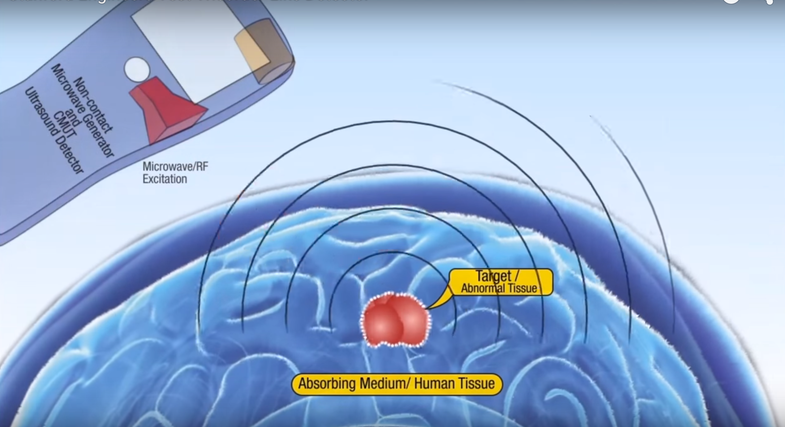Real-Life Tricorder Could Find Land Mines, Tumors
Star Trek IRL


In the Star Trek universe, tricorders are used for applications ranging from disease diagnosis to analyzing the atmosphere on an alien planet. Now a team of scientists might have created a tricorder for our own universe. The device would use electromagnetic waves to detect explosives in the ground, and it might even help diagnose cancer. The researchers from Stanford University published a study about the device in Applied Physics Letters.
The researchers were presented with a challenge from DARPA to create a device that can detect non-metal explosives buried underground, but it can’t touch the object for fear of detonating it. Using microwaves to detect the objects seemed like a great strategy. All materials heat up when they absorb the waves, but different molecules do so at different rates, causing them to vibrate and emit characteristic ultrasound waves. If the researchers could detect the specific ultrasound waves, they could find the buried plastic explosive.
But there was a problem—much of the waves are lost when they pass through air. That’s not an issue if you’re taking an ultrasound of a fetus because you can put the wand right up against the mother’s belly, but it doesn’t work so well if you’re detecting an active bomb. So the researchers created detectors called “capacitive micromachined ultrasonic transducers” that are sensitive enough to pick up the weak ultrasound signals coming from the potential explosive and back to the device through the air.
“What makes the tricorder the Holy Grail of detection devices is that the instrument never touches the subject,” Amin Arbabian, one of the study authors, said in a press release. “All the measurements are made though the air, and that’s where we’ve made the biggest strides.”
The researchers wanted to see if the device could work in a medical capacity, too—the same technique could be useful to quickly detect the presence of masses in the body such as tumors without the need for expensive MRIs. Since heating up the skin or tissues can cause damage, the researchers wanted to determine the device’s safety by holding the device about a foot away from a flesh-like material. They found that the material was only warmed by a thousandth of a degree, well within safety limits.
Now they just need to test it out on real tumors and actual explosives.
Though similar real-life tricorders exist, they rely on other mechanisms for detection, such as mass spectrometry or magnetic resonance. The researchers envision that this device could be useful to detect other masses in the body as well, such as kidney stones. The technology is still in its early stages—it hasn’t been tested yet on humans—and it’s not clear how its sensitivity varies from other types of medical imaging devices, including other uses of ultrasound. But the researchers are optimistic and anticipate that their devices could be widespread in the next decade.